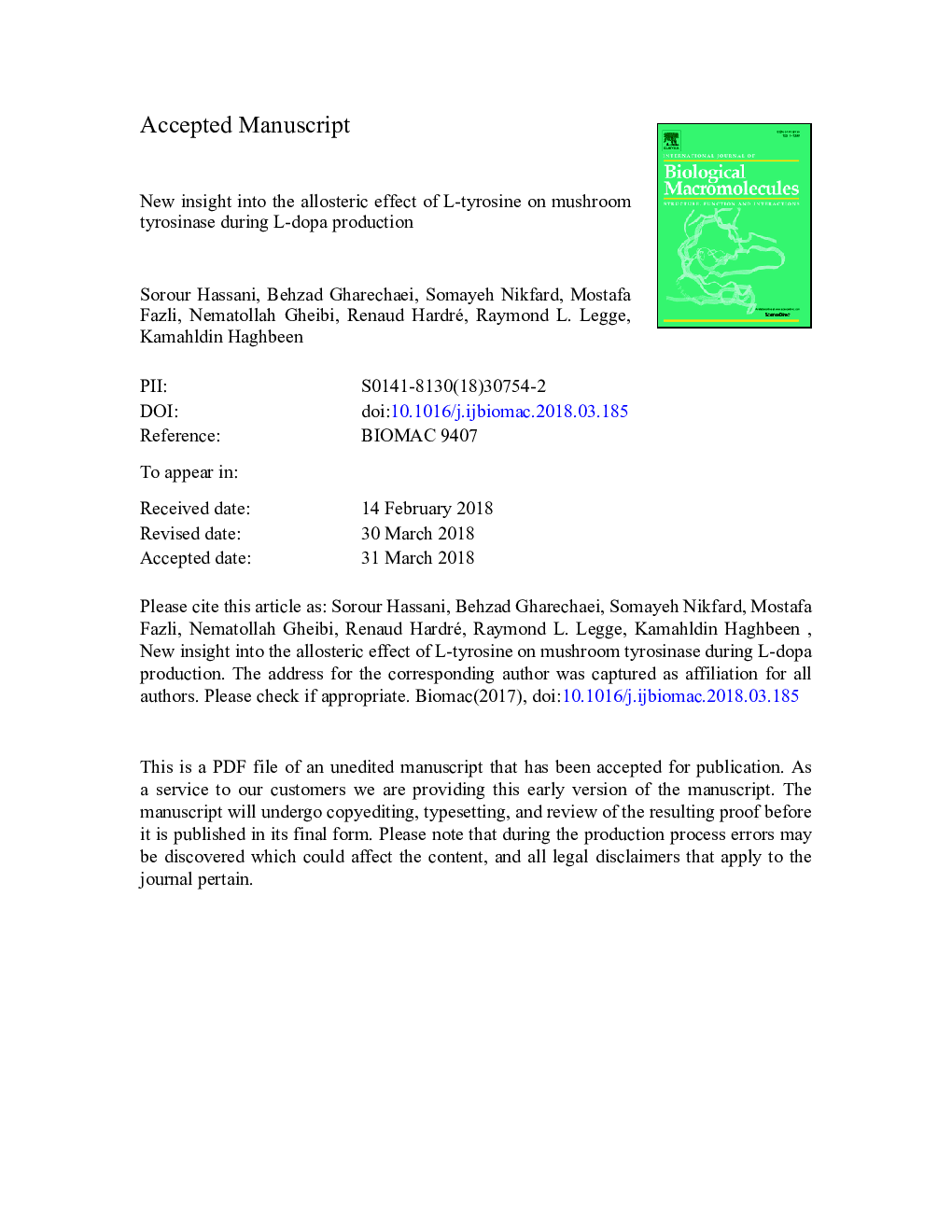| Article ID | Journal | Published Year | Pages | File Type |
|---|---|---|---|---|
| 8327442 | International Journal of Biological Macromolecules | 2018 | 34 Pages |
Abstract
Kinetics studies of L-tyrosine (LTy) ortho-hydroxylation by mushroom tyrosinase (MT) confirmed that MT was severely, but not completely, inhibited at higher concentrations of LTy. Despite the availability of the crystal structure reports, no allosteric site has been identified on MT. To examine the assumption that a non-specific binding site works as a regulatory site, docking simulations were run for the second molecule of L-tyrosine (LTy2) on the complexes of the first L-tyrosine molecule (LTy1) with the heavy chain (H) of MT (LTy1/HMT) and its dimer with the light chain (Ty1/LHMT). In both, LTy2 occupied a non-specific binding site (MTPc). MD simulations revealed LTy2/HMT/LTy1 and LTy2/LHMT/LTy1 were stable. Binding free-energy analysis supported the formation of LTy2/HMT/LTy1 and LTy2/LHMT/LTy1 at higher concentrations of LTy and disclosed the importance of ÎEelec and ÎGpolar during binding of LTy2 to MTPc. Upon LTy2 binding to MTPc, the Cu-Cu distance remained unchanged while the spatial position of LTy1 in the active site (MTPa) changed so that it would not be able to participate in ortho-hydroxylation. This study suggests a tuning role for L chain during binding of the ligands to MTPa and MTPc. Given these results, a plausible mechanism was proposed for the MT substrate inhibition.
Keywords
Related Topics
Life Sciences
Biochemistry, Genetics and Molecular Biology
Biochemistry
Authors
Sorour Hassani, Behzad Gharechaei, Somayeh Nikfard, Mostafa Fazli, Nematollah Gheibi, Renaud Hardré, Raymond L. Legge, Kamahldin Haghbeen,
